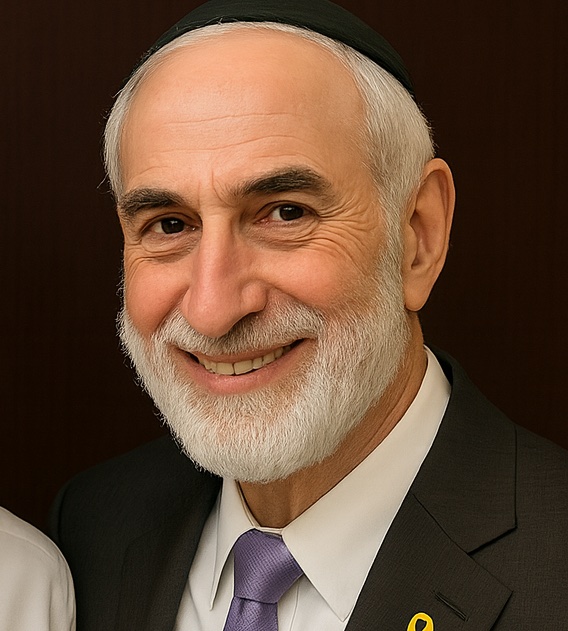Features
How to Successfully Audit Your Current Marketing Stack with Your Digital Marketing Agency’s Help

Ever feel like your marketing tools are running you instead of helping you? You’re not alone. Many businesses have tools they don’t fully use; or worse, don’t even know they have! That’s where a marketing stack audit comes in. And the best part? You don’t have to do it alone.
Your digital marketing agency is your secret weapon.
With their help, you can look at every tool, channel, and report you’re using. Together, you’ll figure out what’s helping you grow; and what’s just collecting dust. It’s all about making your stack lean, smart, and ready to bring real results.
When you want to improve your marketing, the first step is to understand what’s in your current marketing stack. Your marketing stack is the group of tools and software your business uses to reach customers, track results, and grow. Knowing exactly what’s in this stack is important because it helps you see what’s working and what isn’t.
What Is a Marketing Stack?
Think of your marketing stack as your toolbox. It might include things like email services, social media apps, analytics programs, or ad platforms. Each tool plays a part in helping your business connect with people online. But sometimes, businesses add tools without thinking if they really need them. This can make your marketing messy and confusing.
Why You Need to Know Your Tools
If you don’t know which tools you are using, you might be paying for things you don’t need. Or, you could be missing out on ways to improve how your marketing works. When you know what’s in your stack, you can find out if some tools overlap or if some don’t work well together. This makes it easier to fix problems and save money.
How to Start Understanding Your Stack
Start by writing down every marketing tool your business uses. Ask your team or your digital marketing agency to help you. Look at what each tool does and how often you use it. Think about what problems each tool solves and whether it helps you reach your marketing goals.
Set Clear Goals for the Audit

Setting clear goals for the audit is a crucial step when you want to improve your marketing stack. Without clear goals, it’s easy to get lost or miss the point of the audit. By defining what you want to achieve, you and your digital marketing agency can focus on what really matters and get the best results.
Why Goals Matter for Your Marketing Stack Audit
When you set goals, you give the audit a purpose. Maybe you want to save money by cutting out tools you don’t need. Or, perhaps you want to speed up how fast your team can create reports or find new customers. Whatever the reason, goals help you stay focused and measure success after the audit.
How to Set Smart Goals
It helps to make your goals clear and simple. Instead of a vague goal like “improve marketing,” try something specific like “reduce marketing tool costs by 20%” or “increase leads from social media by 15%.” These kinds of goals are easier to track and show progress.
Work with your digital marketing agency to turn your ideas into clear goals. They know what’s possible and can help you set goals that make sense for your business size and budget.
Keep Your Goals Realistic and Focused
Don’t try to fix everything at once. Pick a few important goals that will have the biggest impact. This keeps the audit manageable and lets you see real improvements faster.
Review Each Tool’s Performance and Cost
Reviewing each tool’s performance and cost is a key part of auditing your marketing stack. This step helps you figure out if the tools you’re paying for are actually helping your business or just adding extra expenses. When you do this with your digital marketing agency, you get a clear picture of what’s working and what isn’t.
Why Performance and Cost Matter
Every tool in your marketing stack should bring value. Performance means how well a tool helps you reach your goals, like bringing in more customers or making your work easier. Cost is how much you pay for that tool. If a tool costs a lot but doesn’t help much, it’s time to reconsider.
How to Measure Performance
Look at the results each tool delivers. Ask questions like: Is this tool helping me get more leads or sales? Does it save time? Is it easy to use? Your agency can help gather data and analyze how each tool performs. Sometimes, a tool might seem useful but isn’t actually delivering results.
Checking Costs vs. Benefits
Next, compare what you pay for each tool against the benefits it provides. Some tools might have hidden fees or yearly charges that add up. If a tool is expensive but doesn’t improve your marketing, it could be costing you more than it’s worth.
What to Do After the Review
After reviewing, decide which tools to keep, which to replace, and which to cut. Your agency can recommend better options if needed. This review saves money and makes your marketing work smoother and more effective.
Collaborate on Recommendations and Next Steps
After you review your marketing stack, the next important step is to collaborate on recommendations and next steps with your digital marketing agency. This teamwork helps turn the audit’s findings into clear actions that improve your marketing and save you time and money.
Why Collaboration Is Key
No one knows your business better than you and your agency working together. Your agency brings expertise about marketing tools and strategies, while you bring insight into your goals and challenges. When you combine these, you get smart, practical solutions that fit your business perfectly.
Discuss What Works and What Doesn’t
Start by talking through the audit results. Identify which tools are helping your marketing succeed and which ones are slowing things down or costing too much. Be honest about what needs to change. Your agency can explain why certain tools may no longer be the best fit.
Plan Clear, Simple Next Steps
Together, decide what actions to take first. Maybe you’ll stop paying for some tools, switch to better ones, or improve how you use existing ones. Make sure the plan is easy to follow and fits your budget and timeline. Breaking the plan into small steps makes it less overwhelming.
Keep Communication Open
Good collaboration means staying in touch. Ask your agency to check in regularly and update you on progress. This way, you can make adjustments quickly and keep improving your marketing stack over time.
Conclusion
Auditing your marketing stack with your agency isn’t hard; it’s smart. Clean up what’s not working, save money, and boost results. Your tools should work for you, not the other way around.
Features
Rabbi Gary Zweig’s new book provides humorous and moving accounts of making minyans in unlikely circumstances

By MYRON LOVE The recitation of the kaddish is a central tenet of Jewish religious life. Even members of our community who are largely secular will likely recite the words of the kaddish for a parent, sibling or spouse at some point in their lives – even if only at the grave site.
The kaddish can only be recited publicly in the presence of a minyan – a gathering of ten (men in the Orthodox tradition. The number, as explained by Rabbi Gedalia (Gary Zweig), stems from the number of spies – as written in the Torah – whom Moshe rabbenu sent into the promised land and who came back with negative reports as compared to the two spies – one of whom was Joshua – who said that the land was flowing with milk and honey.
It is this challenge of putting together minyans for a mourner to recite the kaddish in different locales and circumstances – when a minyan in a shul is not possible – that is the subject of Zweig’a newly released book, “Kaddish Around the World” – a 90-plus page compilation of short stories – some humourous, some heartwarming – of successful efforts to recruit enough daveners for a kaddish minyan, ranging in time and space from a Super Bowl game in San Diego to the middle of a game reserve in South Africa to a Jewish museum in Cordoba in Spain – in a city largely devoid of Jews.
Zweig, who hails from Toronto, was in Winnipeg over Yom Tov to lead services – along with Toronto-based Chazan Manny Aptowitser – at the Chavurat Tefila Talmud Torah Synagogue. On the Tuesday just before Yom Kippur, the synagogue hosted an evening to provide the rabbi with a venue to discuss his new book – a sequel to his first book, “Living Kaddish,” which he released in 2007 (and has been translated into Russian and Spanish).
Zweig is one of the original Aish Hatorah-trained rabbis – having attained his smicha in 1982 from Rabbi Noah Weinberg, the founder of Aish Hatorah. He (Zweig) is much travelled, himself having led Yom Tov services in such exotic locales as Bermuda, Barbados and Curacao in the Caribbean, Mexico and Sweden.
Zweig noted that he was inspired to write “Living Kaddish” after his mother passed away in 2002 when, on one occasion, he was not able to find a minyan so that he could say kaddish.
In his presentation at the Chavurat Tefila, he observed that the first Jew to mention kaddish is purported to be Rueven – about 3,500 years ago – on the passing of his father, Yaacov (Israel). About 900 C.E., Zweig continued, kaddish became part of the liturgy and, 200 years later, was included in the siddur.
It is interesting, he noted, that kaddish is said not for the deceased, but, rather, the living. There is no mention of the Lord in the kaddish either. Kaddish is actually a prayer for hope and the future.
For a parent, one is required to say kaddish three times a day – morning, afternoon and evening – for 11 months. For a sibling, child (God forbid), relative or others, the requirement is just 30 days.
One of the stories in “Kaddish Around the World” tells of one of Zweig’s own experiences – after his father died in 20201 at the age of 101. The author happened to be at a family bar mitzvah in Orlando several months later. He fully expected that in a city with a Jewish population the size of Orlando, he wouldn’t have any trouble putting together a minyan for a Sunday morning. He felt even more confident when he noticed that an AMOR Rabbis convention was being held at the same hotel. On inquiring which sort of rabbis these were, he learned that AMOR stood for “Association of Messianic Rabbis”.
Come Sunday morning, most of the bar mitzvah guests had gone home. He could only muster eight for the minyan. He thought he could try the messianic group in the hope that some of them may have been born Jewish. Four of the group offered to help. A Chabad rabbi suggested that Zweig ascertain that each had two Jewish parents. Two qualified.
Zweig quoted one of the two messianic rabbis who said, after the service that ”this was the most moving service I have ever experienced.”
“Maybe Hashem brought me to that particular hotel at that particular time so that I could provide them with little spark of what Judaism is about,” Zweig said.
Another of the stories in the book concerns a shopkeeper in an American mall where many of the other store owners were also Jewish. The individual, Yossi, needed a minyan for mincha (the afternoon prayer) but couldn’t afford to close his business. He figured he could round up enough of the other store keepers to form a minyan. Everyone he approached was willing to come if he were to be the tenth. (In my own years organizing minyans, that was something I heard often enough – “call me if I will be the tenth”). Yossi’s solution was to assure each one he asked that, yes, he would be the tenth.
“Kaddish Around the World” is available on Amazon and also in digital ebook format and as an audio book.
In addition to being a rabbi and author, Zweig also is a singer/songwriter working in his own genre – Jewish rock and roll. He has a band called “The Kiddush Club,” and a CD called “TOYS.” In addition, he has recently launched a YouTube channel called “Living Kaddish”.
Features
The Gaza Peace Plan is not a Done Deal, but an Opening

By HENRY SREBRNIK (Oct. 23, 2025) The idea that Hamas will voluntarily disarm, that international forces will deploy in the Gaza Strip, and that the process of building a Palestinian government by people like former British Prime Minister Tony Blair, in which a disarmed Hamas does not participate, are false hopes, if not fantasies. But does this mean U.S. President Donald Trump’s peace plan was useless? Of course not.
Trump understood the necessity of bringing the war to an end. But he also believed that endless debate among experts or, worse, historian and lawyers, would never produce an agreement. He presented an offer – actually, an ultimatum – to Benjamin Netanyahu and Hamas that neither could refuse: immediate, unconditional and complete release of all hostages and missing persons, something the Israeli public longed for, in exchange for a final end to the war, which a humbled Hamas needed.
Two years of war has left Hamas weaker than it had been in decades. Israeli bombardments had shattered the group’s military capabilities and depleted its arsenals. In many neighborhoods, control had drifted to local clan networks and tribal councils. This hinted at something that could one day replace Hamas’s iron grip. To prevent this, Hamas has been ruthlessly murdering all potential rivals in the areas of Gaza it controls since the ceasefire went into effect.
Despite the severe degradation of its military capabilities during the war, Hamas still has more soldiers and weapons than all its rival factions in Gaza combined. Hamas has managed to redeploy approximately 7,000 militants to reassert control over the territory. They have publicized photographs and videos of their forces murdering and torturing; the victims include women and children.
The ceasefire is a temporary reprieve for Hamas: a chance to regroup, rearm, and prepare for the next round of fighting. In Islamist political thought there’s a word for it, hudna — a temporary truce with non-Muslim adversaries that can be discarded as soon as the balance of power shifts. Then the time for jihad will arrive again. Hamas was established in 1987 and isn’t going to disappear.
In fact Hamas also says it expects an interim International Transitional Authority to hire 40,000 Hamas employees, and Hamas spokesman Basem Naim says he expects its fighters to be integrated into a post-transition Palestinian state.
Still, Trump has succeeded in ending the current war in Gaza, where Joe Biden failed. Biden’s national security team, drawn almost entirely from his supposed expert class, didn’t even see the crisis coming. Just five days before the attack, National Security Adviser Jake Sullivan had published an article in Foreign Affairs in which he wrote that “the region is quieter than it has been for decades.”
Biden also had insulted the Saudi crown prince, Mohammed bin Salman, by publicly condemning the 2018 murder of Saudi dissident journalist Jamal Khashoggi. And, of course, there was Biden’s poor relationship with Netanyahu, and his chronic inability to get the Israeli prime minister to do what he wanted.
By contrast, Trump returned to office with substantially more influence in both the Gulf and Israel, based on his first-term successes in the Middle East, especially the Abraham Accords (for which he’s never been praised by his political enemies).
Four Arab countries formally recognized Israel, beginning with the United Arab Emirates and Bahrain, followed by Sudan and Morocco. The next stage was intended to include Saudi Arabia. One motive put forward by some analysts for the October 7 attacks was that they were intended to provoke Israel into a response that would derail Saudi Arabia’s admission.
Instead of sitting Israelis and Arabs in a room and expecting them to negotiate an outcome, Trump’s approach has been to exert leverage through other players in the region, especially, Egypt, Turkey, and – most importantly – Qatar.
In Jerusalem, they call Qatar “the spoiler state.” Israelis describe the emirate as two trains running behind the same engine. One, led by the Qatari ruler’s mother and brother, supports the Muslim Brotherhood and is an unmistakable hater of Israel. The other, led by the prime minister, Mohammed bin Abdulrahman bin Jassim Al Thani and several other senior figures, seeks rapprochement with the West.
The Qataris were shocked when Israeli jets on Sept. 9 conducted an airstrike in Doha targeting the leadership of Hamas. They then signed onto Trump’s peace plan at a meeting in New York Sept. 23, hosted by Trump and Qatari Emir Sheikh Tamim Ibn Hamad Al Thani, and attended by the leaders of eight Arab states, along with members of the Organization of Islamic Cooperation.
Netanyahu was then browbeaten into accepting the plan (and also forced to apologize to the Emir for the airstrike). It was somewhat ironic that the airstrike made the peace plan possible. As well, Trump’s attack on Iran’s nuclear facilities in June gave this negotiation some very sharp teeth.
“If you would rather leave peacemaking to the historians and diplomats, then you may wait a long time for wars to end,” suggested Niall Ferguson of the Hoover Institution at Stanford University, in an Oct. 15 Free Press article. His advice? Go to the “deal guys: They get the job done.”
In a sense, both Israel and Hamas had accomplished their goals. Israel had broken the Iranian axis of terror by eliminating Hezbollah and Hamas as a fighting force, along with the Iranian nuclear threat. Hamas had succeeded in luring Israel into a trap that led it to become hated and isolated around the world. This included the labelling of Israel as genocidal and the global call for a Palestinian state.
The rest of the 20-point peace plan will be addressed in a step-by-step fashion. Meanwhile, Israel must ensure that it retains freedom of action in Gaza, by decisive action against any attempt by Hamas to rebuild its army, its rockets, its battalions and its divisions.
Henry Srebrnik is a professor of political science at the University of Prince Edward Island.
Features
Why Fitness Routines Fall Apart — and How to Rebuild Yours

Every spring, gyms see a flood of hopeful faces. New shoes, fresh playlists, unwavering intentions, by mid-summer? Half of them vanish into the fog of abandoned routines. The story repeats year after year until it starts to feel almost scripted. Why does enthusiasm evaporate? The easy answer involves willpower but that explanation misses the point. Habits don’t fail because people are weak. Life stress, boredom, and monotony ruin routines. Timely lever pulls can change narratives. The hardest part is persevering when motivation wanes.
Mistaking Motivation for Momentum
Most chase that opening surge, the lightning strike of motivation, but then stop searching once enthusiasm fizzles. A scroll through sites like PUR Pharma (pur-pharma.is/) or a glimpse of an influencer’s progress triggers a burst of action: new workout gear ordered, plans scribbled in planners destined for dusty drawers. Yet momentum fades when small setbacks pop up (a late meeting here, rainy weather there). Real progress comes from building systems stronger than any fleeting pep talk. Those who frame fitness as something owed to motivation end up back at square one every time life interrupts, which it always does.
Overcomplicating Everything
It’s tempting to turn wellness into a science fair project with spreadsheets and specialized equipment lined up on day one. This is the allure of complexity disguised as seriousness, a new diet paired with seven types of supplements and four color-coded bottles. Simplicity gets lost in the noise almost instantly. Most successful routines rely on two principles: keep it simple and keep showing up even when everything else is chaos outside those gym walls. Anyone insisting that perfection is required before taking step one has already constructed an excuse not to begin at all.
Forgetting Fun Completely
Who decided exercise must hurt or look like punishment? Somewhere along the line, fun got swapped out for grind culture and “no pain, no gain.” That isn’t just unappealing, it’s unsustainable over months or years. If sessions feel like torture devices borrowed from medieval times, nobody should be surprised when commitment falters fast. Seek activities that actually spark some joy or curiosity, a dance class instead of yet another treadmill session, maybe, or play a pickup game rather than slogging through solo circuits again and again.
Ignoring Recovery (and Reality)
Sleep deprivation, disguised as discipline, fools anyone, except perhaps uncritical Instagram followers. Ignoring recovery turns ambition into tiredness faster than any missed session. Because bodies break without rest, routines must breathe with owners. Cycling, real leisure, and honest self-checks regarding weekly goals build endurance, not continual pushing.
Conclusion
Change rarely arrives by force alone but usually grows quietly from patterns repeated imperfectly over time, even if last month looked nothing like this week so far. Drop the hunt for nonstop inspiration. Instead of breaking behaviors at the first hint of stress or boredom, build habits that last. People who rebuild methodically after every stumble or detour make progress, not those who peak and then fall.


